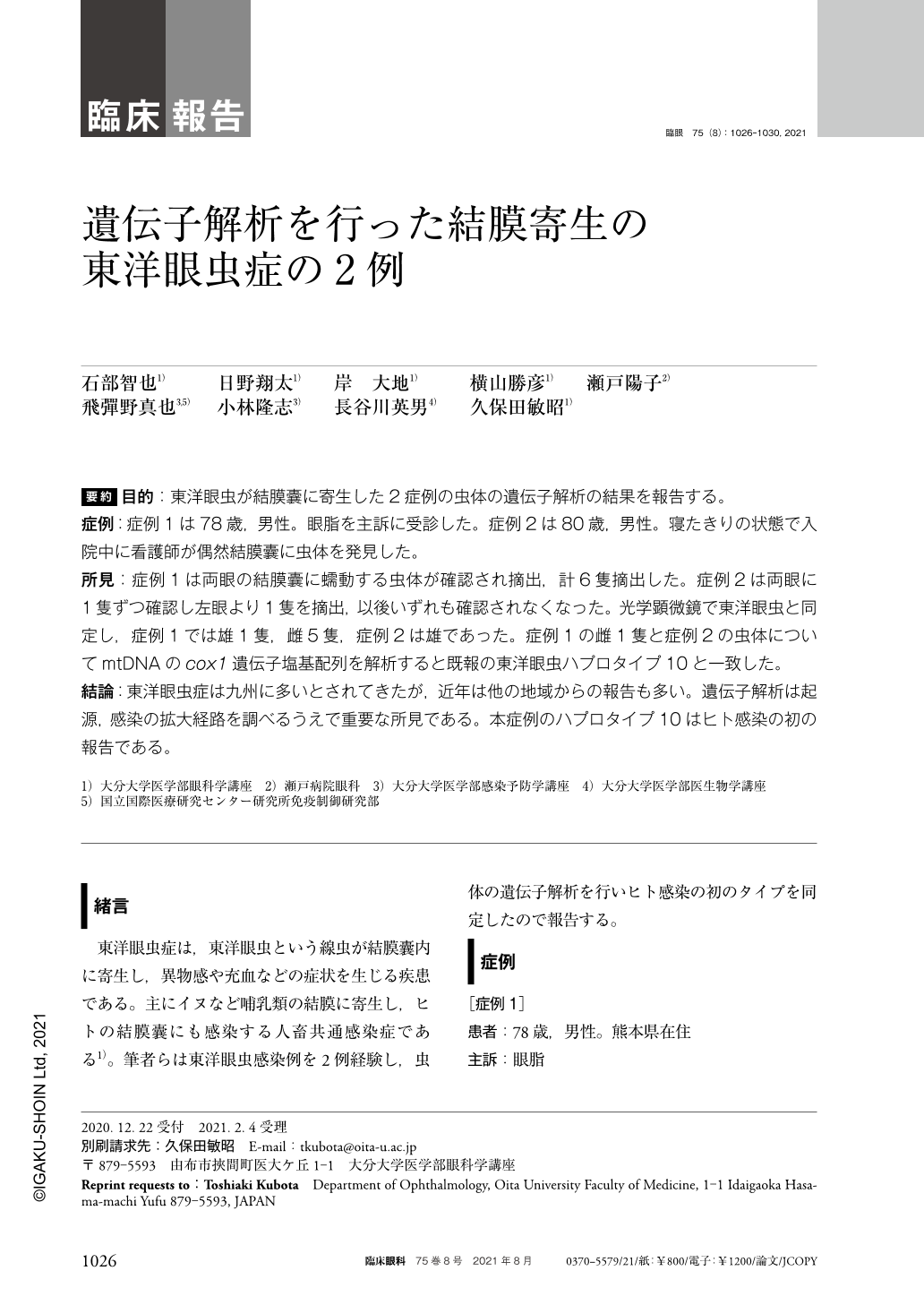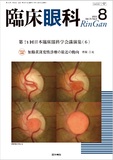Japanese
English
- 有料閲覧
- Abstract 文献概要
- 1ページ目 Look Inside
- 参考文献 Reference
要約 目的:東洋眼虫が結膜囊に寄生した2症例の虫体の遺伝子解析の結果を報告する。
症例:症例1は78歳,男性。眼脂を主訴に受診した。症例2は80歳,男性。寝たきりの状態で入院中に看護師が偶然結膜囊に虫体を発見した。
所見:症例1は両眼の結膜囊に蠕動する虫体が確認され摘出,計6隻摘出した。症例2は両眼に1隻ずつ確認し左眼より1隻を摘出,以後いずれも確認されなくなった。光学顕微鏡で東洋眼虫と同定し,症例1では雄1隻,雌5隻,症例2は雄であった。症例1の雌1隻と症例2の虫体についてmtDNAのcox1遺伝子塩基配列を解析すると既報の東洋眼虫ハプロタイプ10と一致した。
結論:東洋眼虫症は九州に多いとされてきたが,近年は他の地域からの報告も多い。遺伝子解析は起源,感染の拡大経路を調べるうえで重要な所見である。本症例のハプロタイプ10はヒト感染の初の報告である。
Abstract Purpose:To report two cases of conjunctival infestation with Thelazia callipaeda and their haplotype analysis.
Cases:A 78-year-old man visited an ophthalmic clinic with eye discharge. In the second case, mite body was discovered in an 80-year-old bedridden man's right conjunctival sac in Oita University Hospital by a nurse.
In the first case, worms with peristaltic action in both conjunctival sacs were discovered and removed. They were six in all. The worm was discovered in each eye, and removed from the left eye in the second case. They were identified as Thelazia callipaeda under light microscopy. The mite bodies included one male and five females from the first case, and one of the second case was male. Sequence of Cox1 gene in mtDNA showed with haplotype 10, which was reported to be infected in a dog.
Conclusion:Thelazia callipaeda had been reported to be distributed in Kyushu;however, the distribution is becoming wide. Analysis of their haplotype is important to find the origin and expansion route. This is the first report on human infected with haplotype 10 Thelazia callipaeda.

Copyright © 2021, Igaku-Shoin Ltd. All rights reserved.


